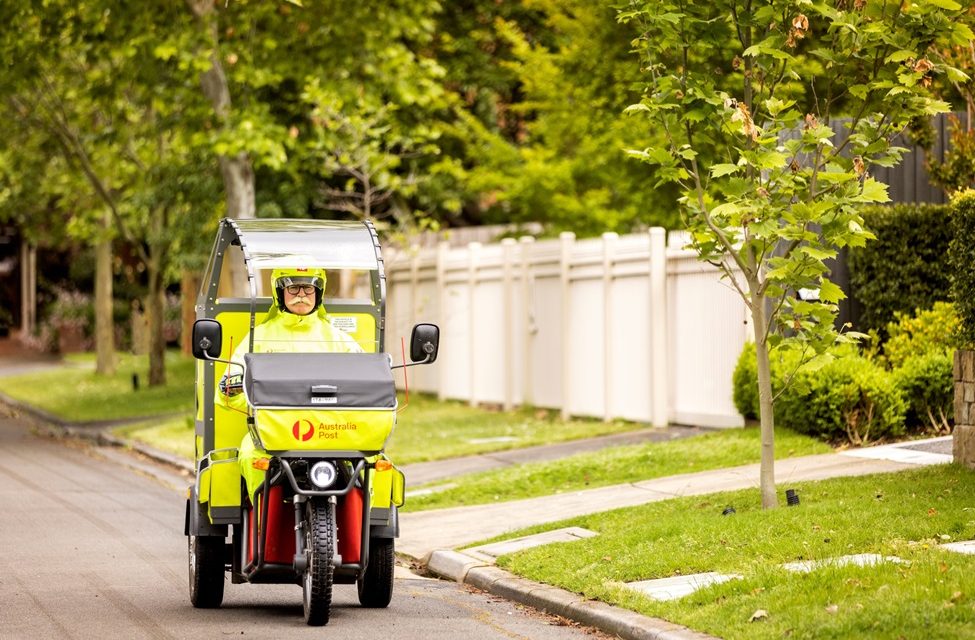
Australia Post: More than 50 postal workers are falling victim to dog-related incidents each week

Australia Post has seen a spike in dog-related incidents, with an average of 7.5 recorded each day since July this year. With the busiest time of year approaching, Australia Post is making a plea for dog owners to take action to help protect their Postie.
The sharp rise in dog-related incidents was most pronounced in Queensland and New South Wales, as illustrated in the state-by-state breakdown:
- 321 in Queensland
- 306 in New South Wales
- 177 in Western Australia
- 103 in Victoria
- 68 in South Australia
- 9 in the Northern Territory
- 5 in Tasmania
Despite ongoing public awareness campaigns from Australia Post, the frequency of dog related incidents has not decreased. Rod Maule, Australia Post General Manager Safety and Wellbeing, emphasised the simple steps dog owners can take to keep posties safe.
“Our team of Posties are working hard delivering to our customers in all parts of the nation, however we need the support of dog owners to keep their dog secure and our Posties safe.
“We see a lot of incidents occur at the front door as our Posties try to deliver packages, with dogs racing out from behind their owners. It takes just a second to secure your dog in another room, and it makes the world of difference to our team members.
“This is our busiest time of year, in fact in all metro capitals and some regional cities and towns we are now delivering up to seven days a week so it’s more important than ever to keep dogs secure. We know our customers are eager to get their deliveries however our team’s safety comes first, if it’s not safe for our Posties to approach a home, then they won’t be able to deliver.” Mr Maule concluded.
Australia Post data identified the following areas as having the highest number of dog related incidents nationally:
- Darra, Qld
- Alexandria, NSW
- Nepean, NSW
- Tamworth (New England), NSW
- Rockingham, WA
- Stafford, Qld
To help protect its team members Australia Post has introduced several preventative measures aimed at reducing the number of dog-related incidents.
In addition to on-the-job training Posties are also provided with a digital hazard tracker that allows them to log the location of a hazardous dog. The next time they, or any other postie, approach a pre-logged location they will receive a warning notification on their device, allowing them to avoid it or take extra care.
Australia Post has also re-introduced a postmark featuring a message to ‘secure your dog for safe delivery’. The postmark will be stamped on envelopes processed through our letter facilities in Victoria, New South Wales, Western Australia and Queensland* in a bid to remind residents of the importance of securing their dog.
Dr Tracey Henderson, Animal Behaviour Veterinarian, Director Dog Bite Prevention Project said, “Christmas is a time people’s front gates and front doors become busier with deliveries, service providers doing last minute maintenance, and the arrival of guests.
“For many dogs these environmental changes generate heightened feelings of fear, anxiety and stress. When cortisol levels are elevated dogs find it hard to regulate their response to things that threaten or frighten them, which in turn can result in an increased risk of aggression, bites and attacks.
“Even dogs that are ordinarily calm, friendly or welcoming can show uncharacteristically protective or aggressive behaviours when experiencing prolonged periods of stress. At this time of the year, I encourage people entering properties where there are both known and unknown dogs, to take additional care and be mindful of early warning signs that a dog might be fearful, anxious, or stressed which could pose a greater risk of a bite or attack.”
Earlier this year Australia Post formed a Dog Safety Taskforce together with other companies who face similar challenges when delivering to or entering a property. The taskforce includes companies like Uber, Ergon Energy, Energex and SA Power Networks with each business sharing insights on the impact of dog related incidents within their own workforce and possible strategies to help reduce the number of incidents moving forward.












